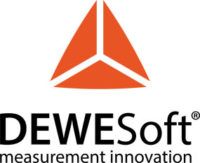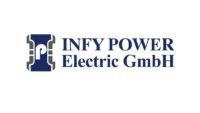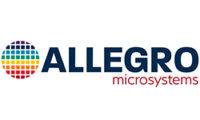The listing you are trying to access is currently inactive or no longer available.
Through science, technology and a commitment to our customers, we empower success every day. We strive to instill a sense of confidence and peace of mind for our customers as we work together to develop ideas, solve some of the industry's toughest challenges and create the future of mobility. We bring 100-plus years of industry experience and decades of technological know-how in energy, consumer electronics, advanced materials and more. And, no matter where you are, we're never far away. We maintain established support and collaboration networks all over the world.
Elektro-Automatik was founded in 1974 in Viersen, Germany, with the aim of producing high-tech power supplies and electronic consumers for research & development and industrial applications. EA has grown to over 250 employees in development and production at its headquarters. The company provides worldwide support with subsidiaries in China and Russia. In 2018, EA established EA Elektro-Automatik USA to support its established growth in North America.
Bond Technologies is a global leader in Friction Welding Machinery and Processing, setting new standards in manufacturing for industries including Automotive, Aerospace, Shipbuilding, Railcar, Electronics, and more.
Dewesoft is a leading provider of data acquisition and analysis solutions that are used in the most advanced labs all over the world.
Eaton’s mission is to improve the quality of life and the environment through the use of power management technologies and services.
Founded in 1984, Chroma ATE Inc. is a world leading supplier of precision test and measurement instrumentation, automated test systems, intelligent manufacturing systems, and test & automation turnkey solutions marketed globally under the brand name "Chroma".
For more than 10 years, SAB Bröckskes, as one of the world's leading cable manufacturers, has been meeting the challenges of developing and optimizing high-voltage cables as well as high-voltage measurement technology for components in electro-mobility.
Scansonic MI GmbH develops, produces and sells laser processing optics for welding, brazing, hardening, softening, coating and cutting. Founded in 2000, the company set a new industry standard with its very first product.
DEWETRON is a leading manufacturer and developer of user-friendly, highly precise, and versatile data acquisition systems. By developing both hardware and software in-house, we ensure a seamless user experience and integration. Our DAQ solutions deliver accurate measurement data with ease, enabling fast and efficient analysis. With our intuitive measurement software, you gain access to a full suite of analysis tools tailored to your needs.
Dytran, a developer and manufacturer of sensors for comprehensive NVH testing and monitoring, offers a wide variety of uniaxial, triaxial and 6 degrees of freedom accelerometers. Their innovative product lines enable designers and engineers to conduct shock and vibration evaluation of various vehicle components to determine the long-term durability and performance of electric and hybrid vehicles.
MAHLE Powertrain provides engineering & consultancy services for the design, testing, development, calibration and integration of electrified powertrain systems and hybridised internal combustion engines.
Founded in 1987, H.E.L Group is a UK-based company that designs and manufactures laboratory instruments and software to enhance safety, efficiency, and productivity in chemical and biological research. Serving industries such as pharmaceuticals, biotechnology, chemicals, and battery testing, H.E.L supports scientists and engineers globally with innovative tools for complex R&D challenges.
Littelfuse, Inc. is a global leader in industrial technology, specialising in the development of innovative and reliable solutions that improve the safety, efficiency and performance of systems in a wide range of industries.
Infypower Electric GmbH professionally engages in power supply and power system solutions for renewable energy industry.
We are a world-renowned provider of high-performance power conversion products, specially utilized in EV charging and energy storage sectors, including ACDC converters, DCDC modules and bidirectional inverters.
We are a world-renowned provider of high-performance power conversion products, specially utilized in EV charging and energy storage sectors, including ACDC converters, DCDC modules and bidirectional inverters.
Coperion is the international market and technology leader in compounding systems, feeding technology, bulk materials handling systems and services.
Hesse GmbH, founded in 1995 and based in Paderborn, Germany, develops and manufactures fully automatic ultrasonic wire bonding and welding machines as well as laser welding systems together with standard or customer-specific automation solutions for the semiconductor industry backend.
As a specialist in ultrasonic welding, Herrmann has been about exciting its customers for more than 60 years. For this purpose, a combination of services was developed with Herrmann Engineering, with which more than 600 employees in over 20 countries successfully implement projects together with their customers.
Allegro MicroSystems (NASDAQ: ALGM) is a global semiconductor leader in sensor and power integrated circuits (ICs) and photonics. Our team is passionate about developing intelligent solutions that move the world toward a safer and more sustainable future.
Henkel's Adhesive Technologies business unit is the global leader for adhesives, sealants and functional coatings and provides high-impact solutions across more than 800 industry segments including Automotive under well-known brands like Loctite, Teroson or Bergquist.
Continental Engineering Services (CES) is a leading engineering services provider, active in markets including the automotive, aerospace and industrial sectors. With over a decade of experience in sustainable mobility, CES supports all aspects of electrified product and vehicle development from concept to production, from simulation to build and test.
As a global, family-owned company, we have been developing manufacturing systems and machine tools for more than 90 years
TLX Technologies is an innovative, technology-centric producer of customized electro-mechanical solenoid products. With over 150 years of combined solenoid design experience and multiple design patents, our team’s strength lies in designing and manufacturing custom solutions that perfectly fit each client’s unique applications.
With our innovative technology, we are making the mobility of today and tomorrow safer, more efficient and more sustainable. We, CSM Computer-Systeme-Messtechnik GmbH, are a manufacturer of distributed and robust measurement technology for vehicle development.
Atotech, a brand within the Materials Solutions Division of MKS Instruments, is a global leader in advanced surface modification and plating technologies. Specializing in electroless and electrolytic processes, Atotech offers a wide range of chemistry, equipment, software, and services for high-tech applications across diverse industries. By leveraging MKS' innovation and its global network of TechCenters, Atotech provides cutting-edge solutions with unmatched local customer support.























